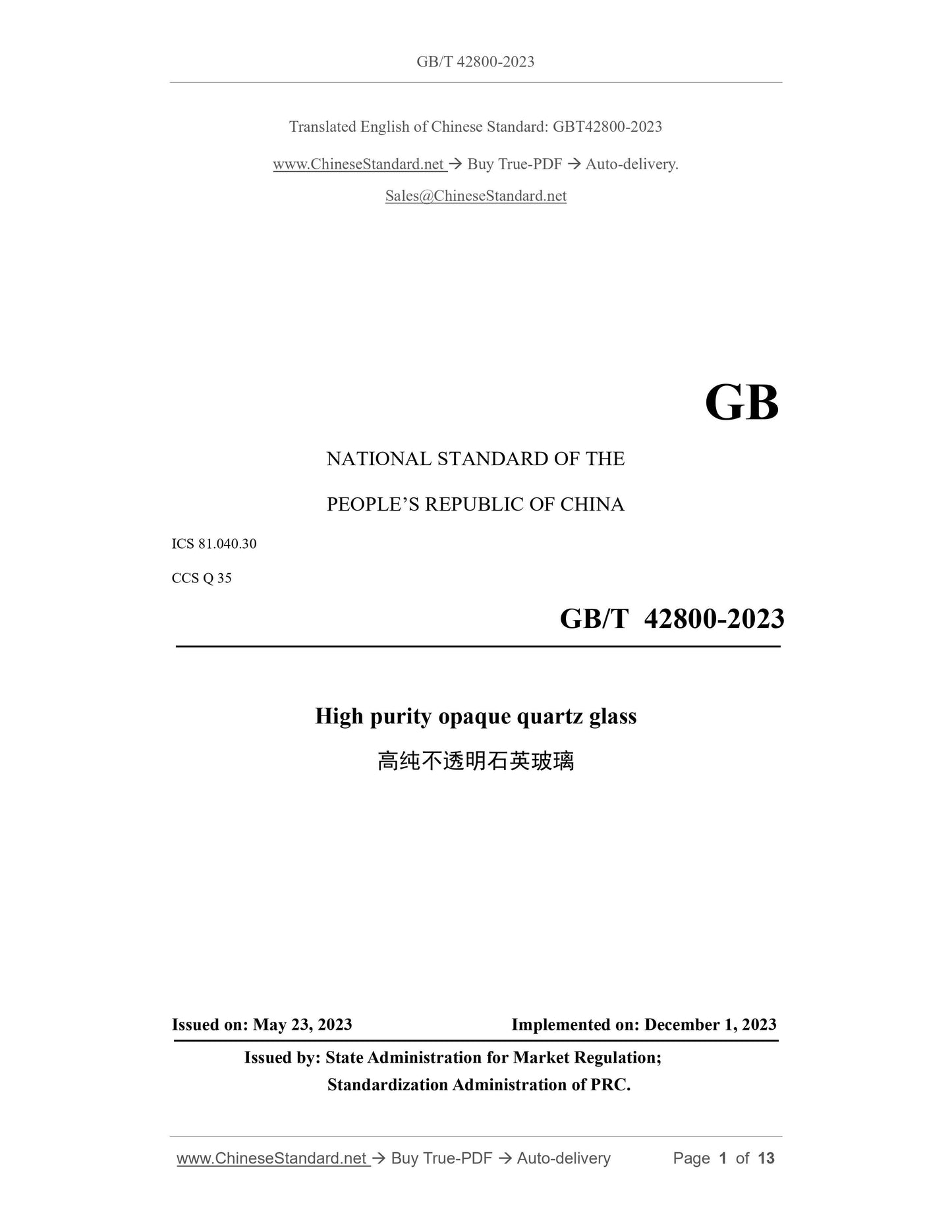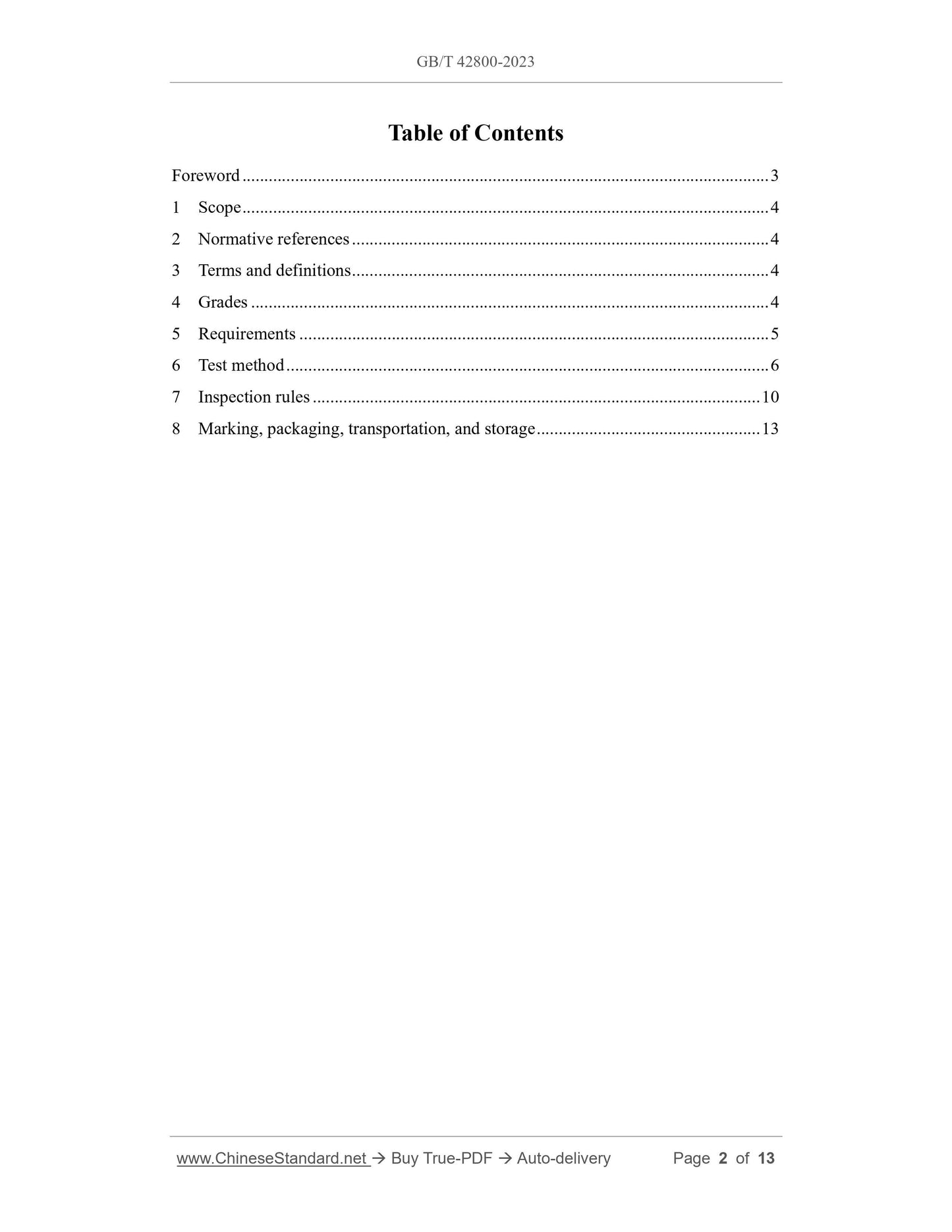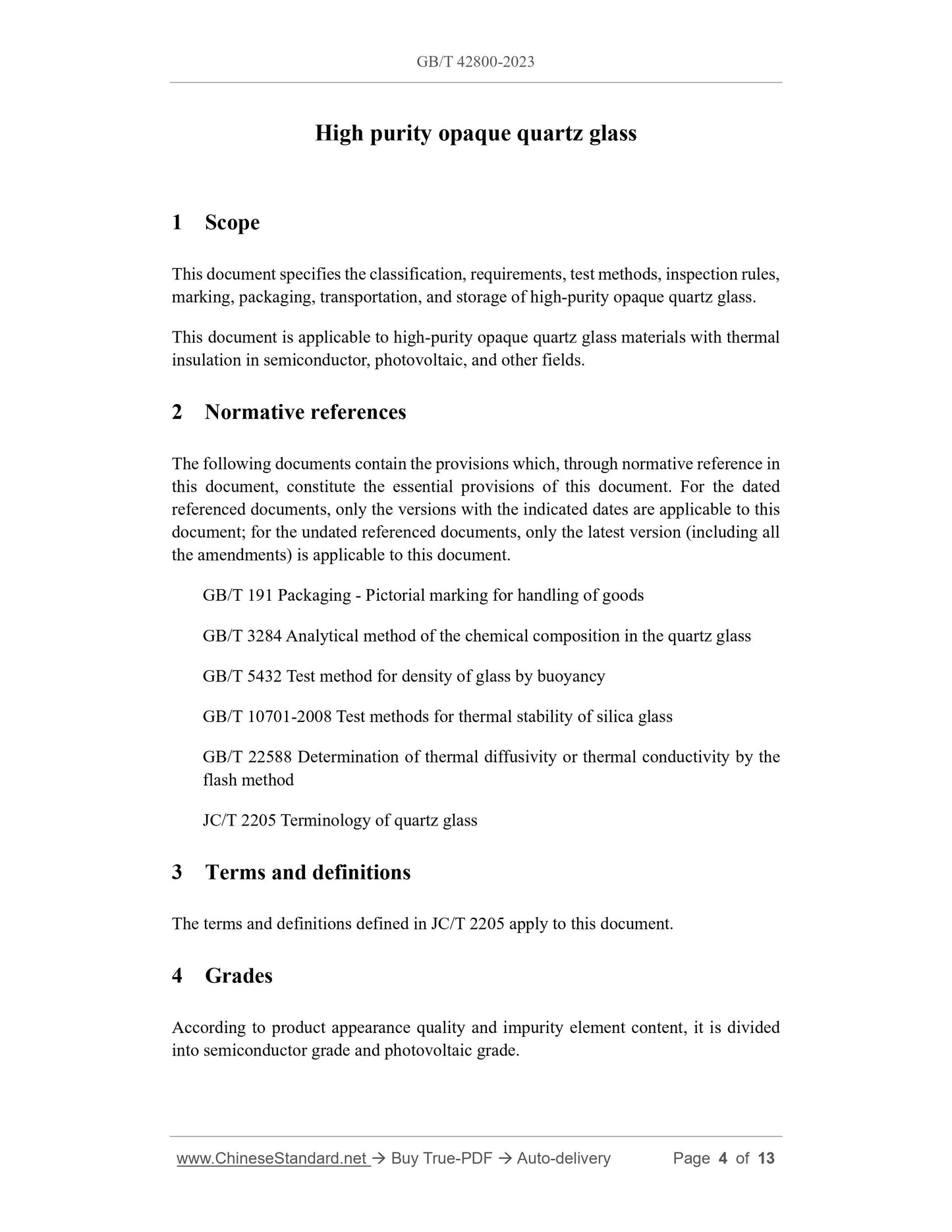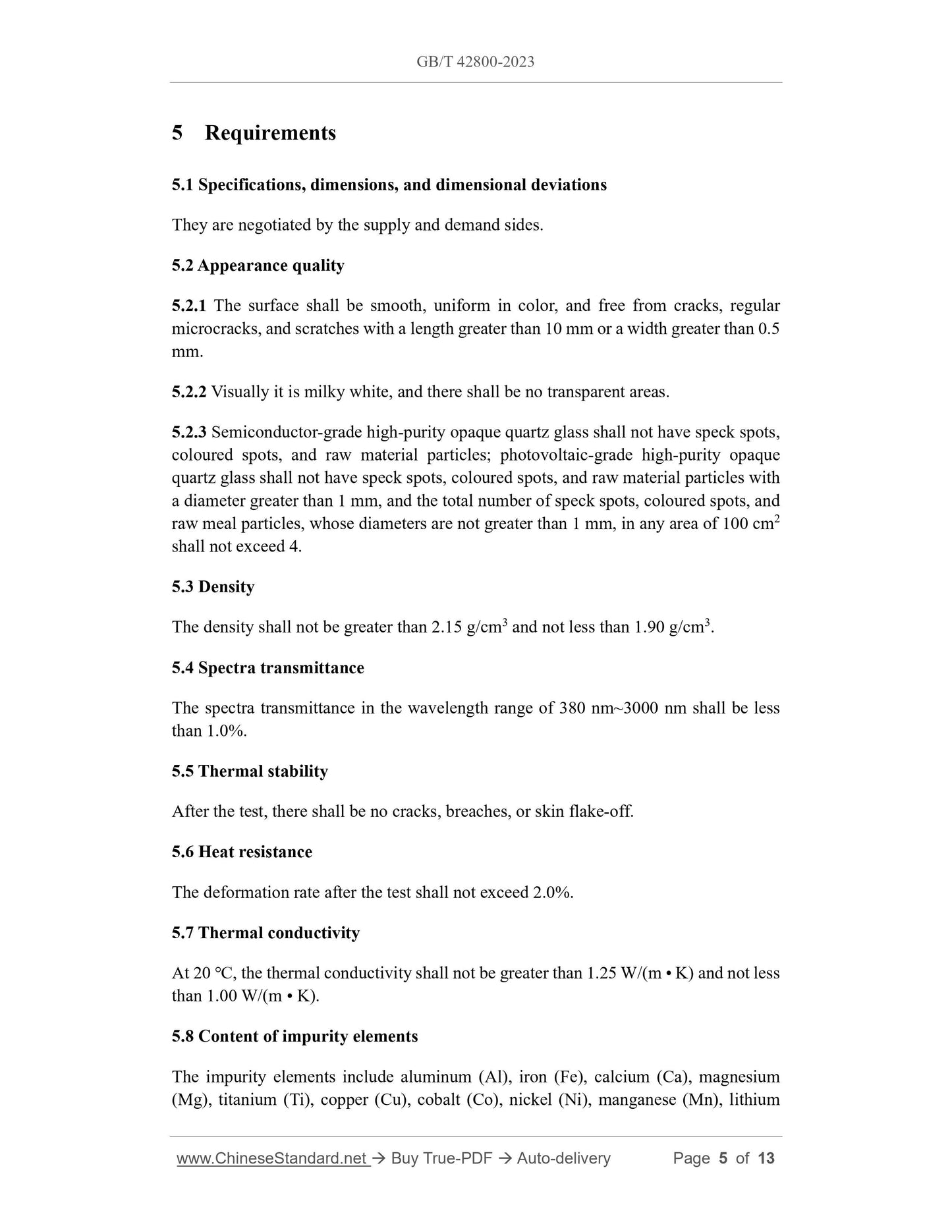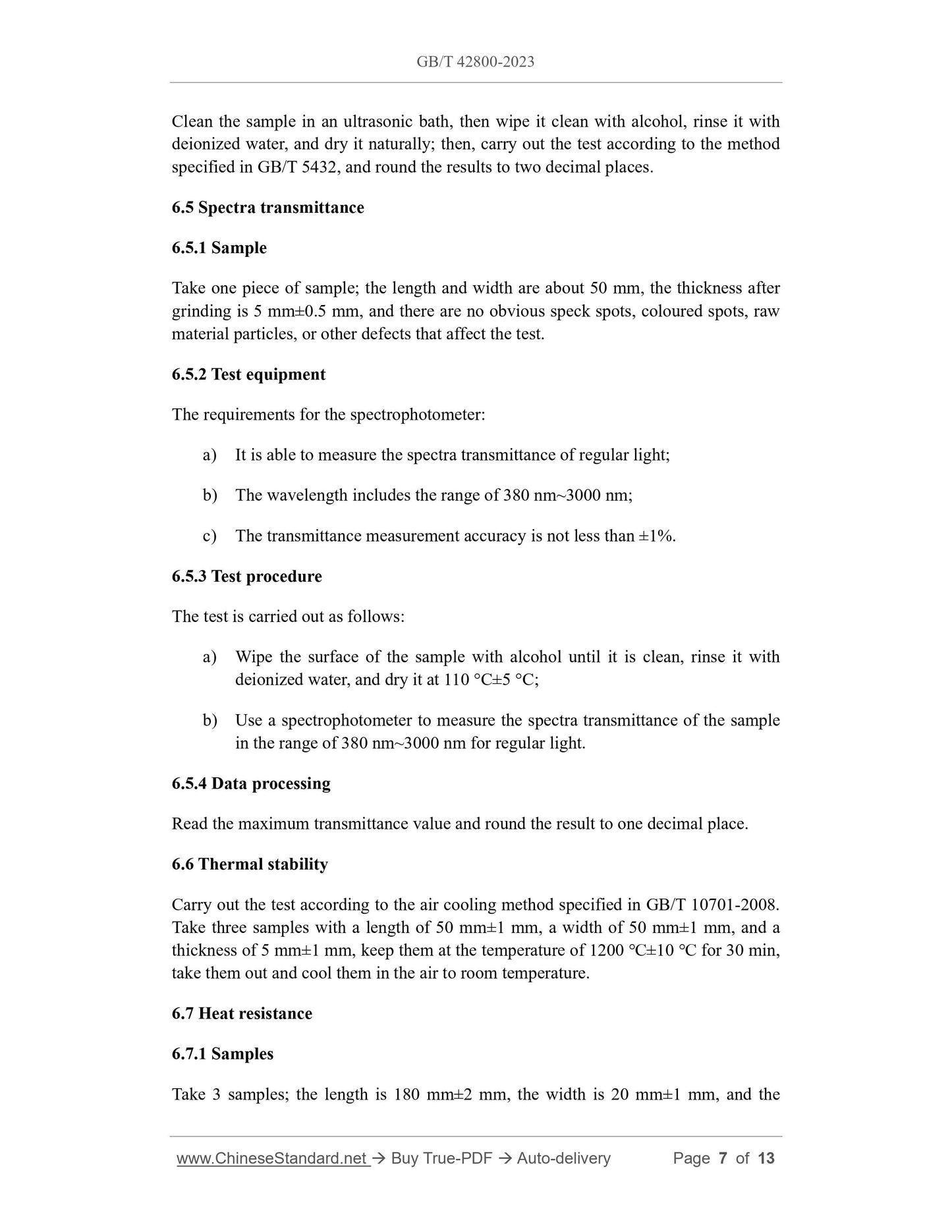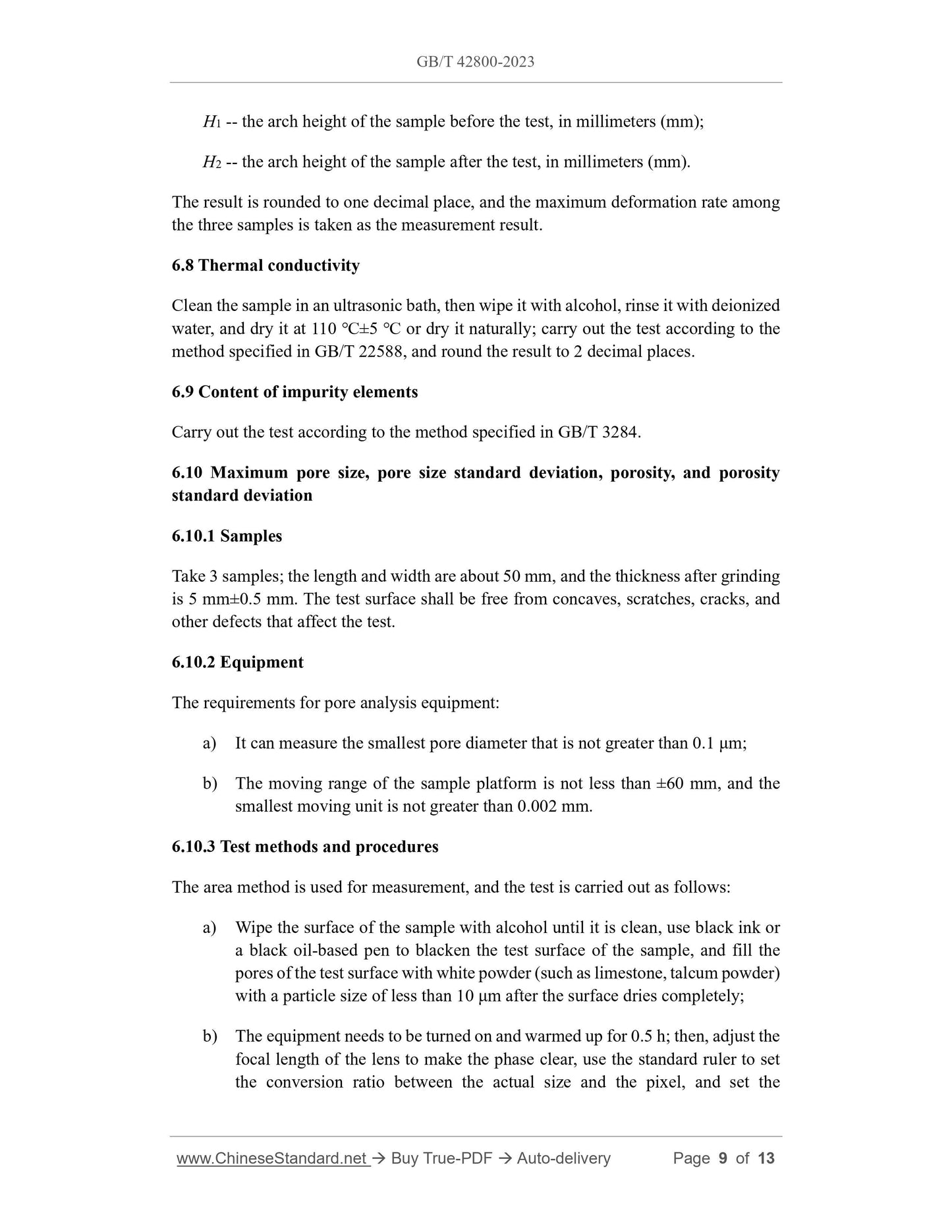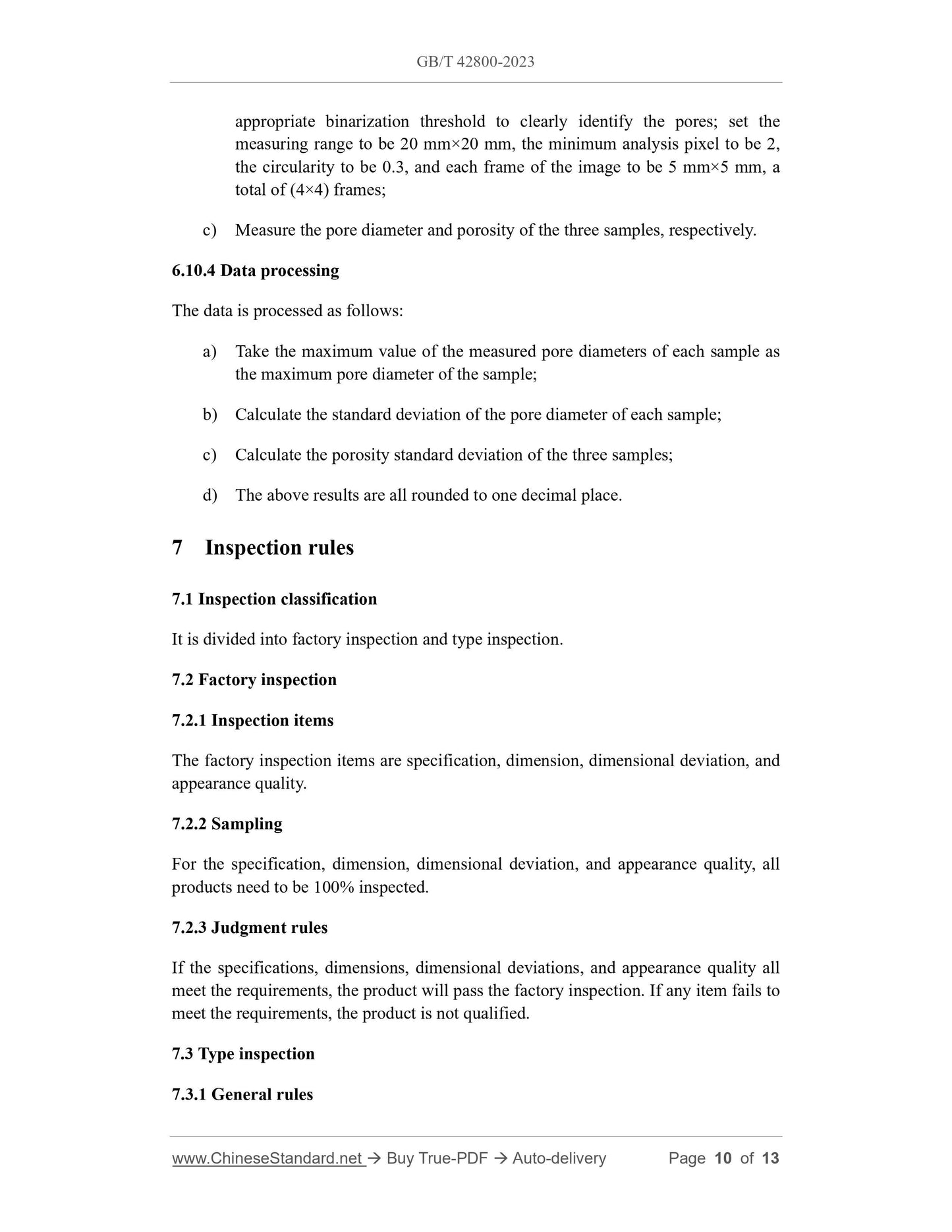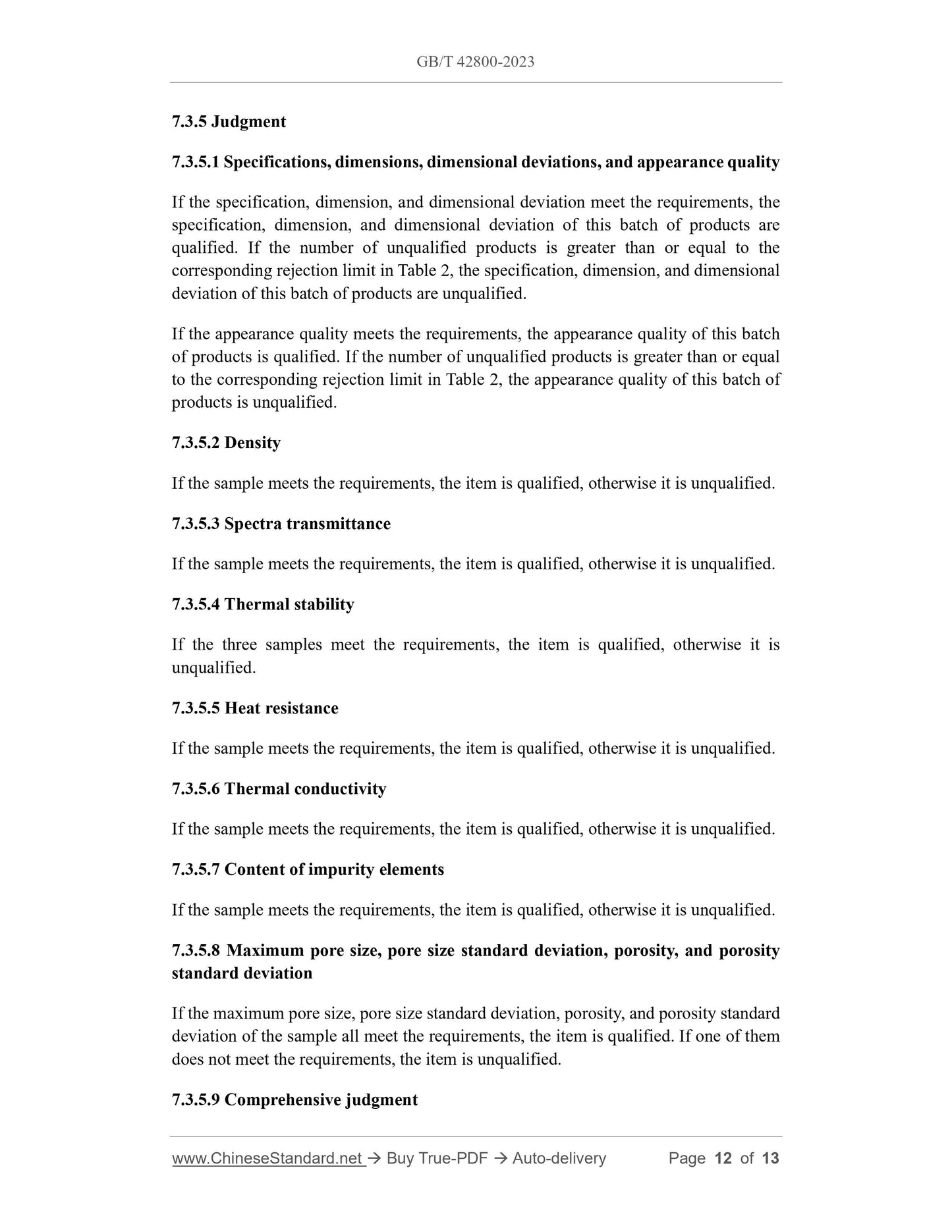1
/
of
8
www.ChineseStandard.us -- Field Test Asia Pte. Ltd.
GB/T 42800-2023 English PDF (GB/T42800-2023)
GB/T 42800-2023 English PDF (GB/T42800-2023)
Regular price
$170.00
Regular price
Sale price
$170.00
Unit price
/
per
Shipping calculated at checkout.
Couldn't load pickup availability
GB/T 42800-2023: High purity opaque quartz glass
Delivery: 9 seconds. Download (and Email) true-PDF + Invoice.Get Quotation: Click GB/T 42800-2023 (Self-service in 1-minute)
Newer / historical versions: GB/T 42800-2023
Preview True-PDF
Scope
This document specifies the classification, requirements, test methods, inspection rules,marking, packaging, transportation, and storage of high-purity opaque quartz glass.
This document is applicable to high-purity opaque quartz glass materials with thermal
insulation in semiconductor, photovoltaic, and other fields.
Basic Data
| Standard ID | GB/T 42800-2023 (GB/T42800-2023) |
| Description (Translated English) | High purity opaque quartz glass |
| Sector / Industry | National Standard (Recommended) |
| Classification of Chinese Standard | Q35 |
| Classification of International Standard | 81.040.30 |
| Word Count Estimation | 12,125 |
| Date of Issue | 2023-05-23 |
| Date of Implementation | 2023-12-01 |
| Issuing agency(ies) | State Administration for Market Regulation, China National Standardization Administration |
Share
